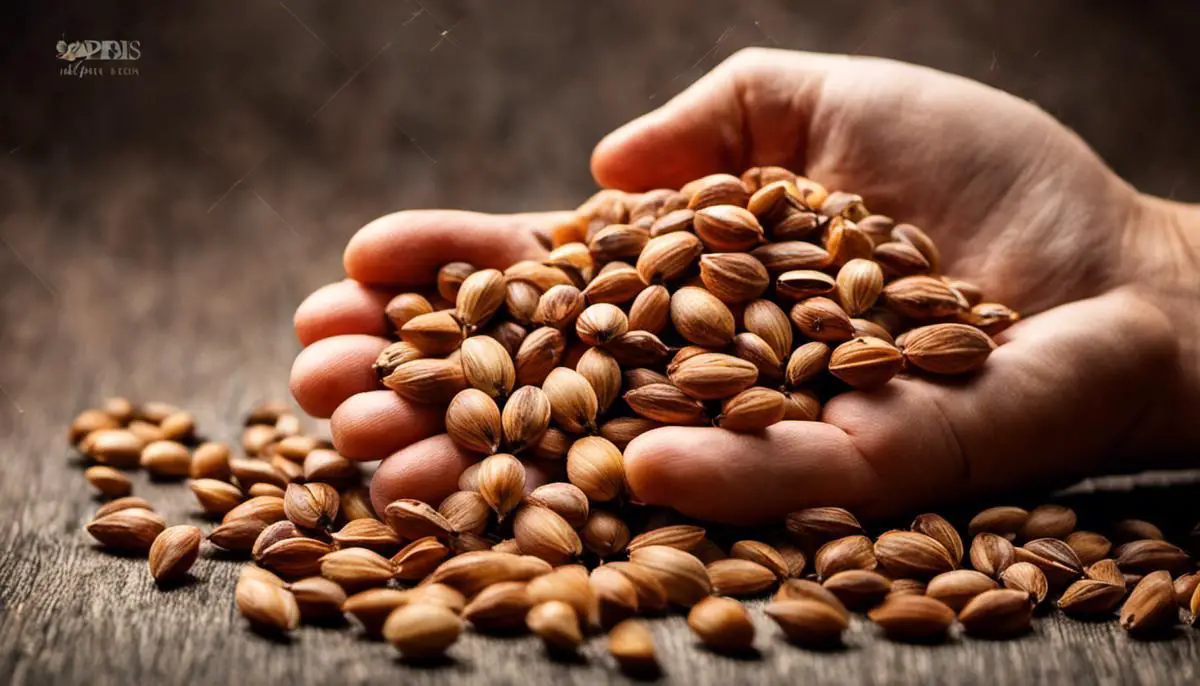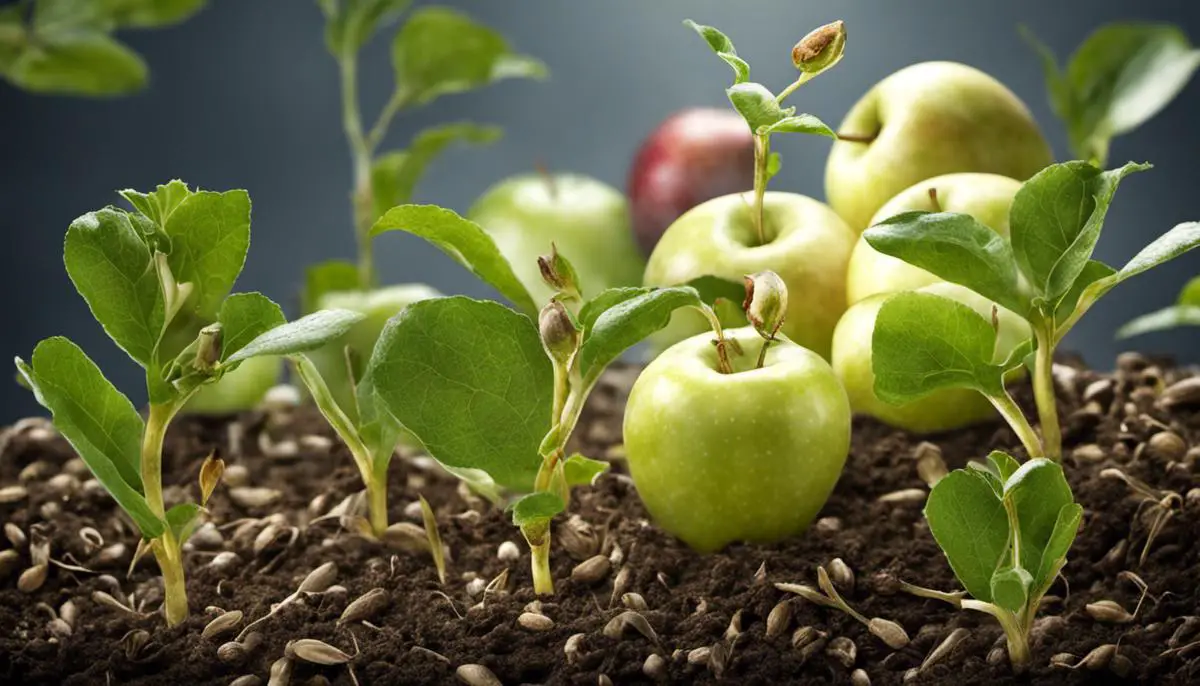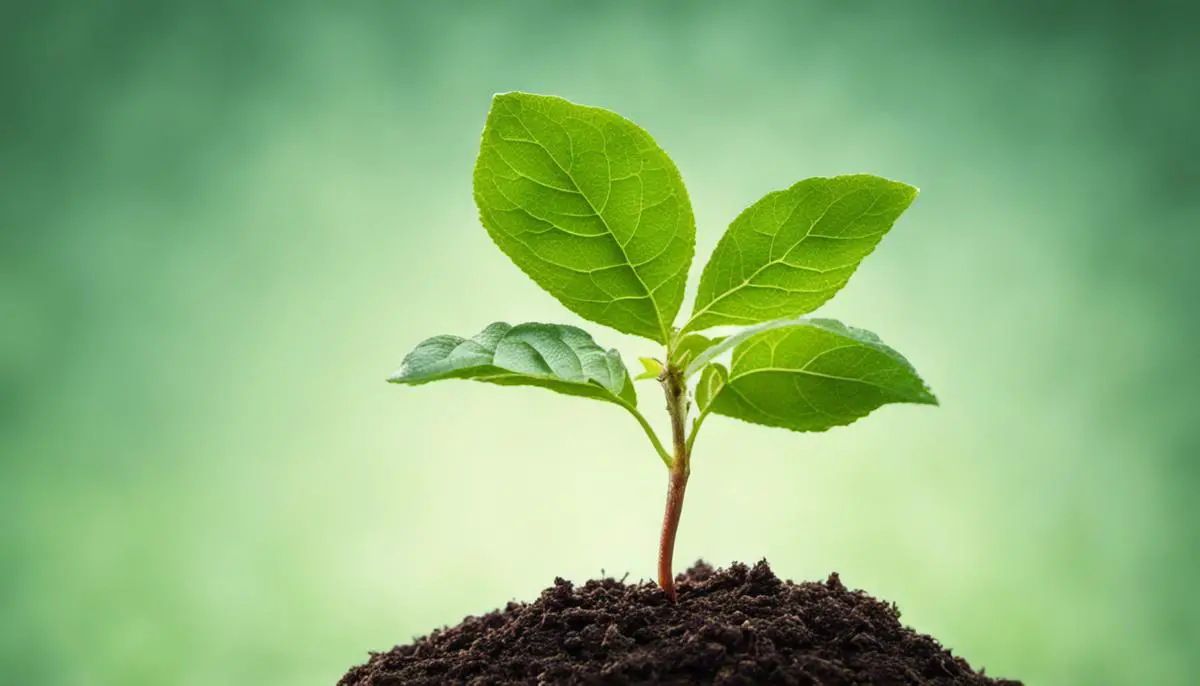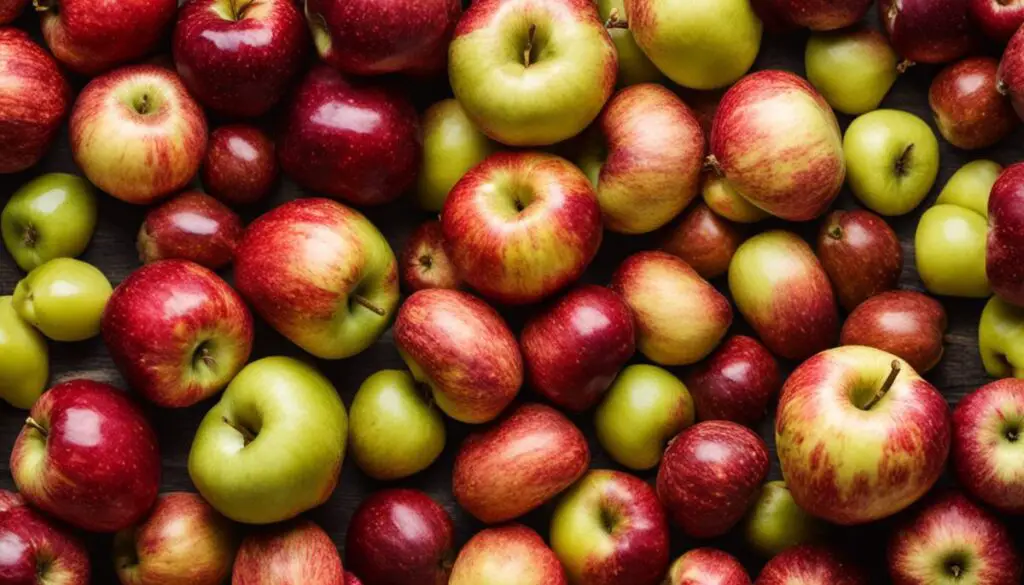The miracle of an apple doesn’t stop at its wholesome, crisp fruit. Hidden within its core lies a universe of potential in the form of small but mighty apple seeds. These heralds of nature hold the blueprint of life, promising not just a single apple, but the prospect of an entire apple tree, given the right conditions. This brief aims to lift the veil on these little wonders, delving into the world of apple seeds, their interesting varieties, unmatched characteristics, and vital nutritional value. Moreover, it seeks to demystify the marvel of the apple seed sprouting process and shed light on the nurturing of apple seedlings to maturity and beyond.
Understanding Apple Seeds
Apple seeds
Apple seeds, also known as pips, are the small and typically hard seeds found in the core of apples. They are enveloped in the apple fruit which is developed from the ovule after fertilization. While the seeds are relatively small, they’re packed with an array of powerful compounds and properties.
Varieties and Characteristics
There are many varieties of apple seeds, each corresponding with a specific type of apple. The variety of a seed can significantly influence the characteristics of the tree that it would potentially grow into as well as the fruit it produces. Apple trees that sprout from seeds are not true to their parent, meaning they usually produce apples that are greatly different compared to those from the parent tree.
Seed Structure and Germination
Apple seeds display a hard outer coating, a feature that serves to protect the inner seed embryo. This embryo is the part of the seed that will eventually grow into a new plant if provided with the right conditions, including the proper mix of sun, temperature, and soil. This hard coating can also help in preventing the apple seed from sprouting prematurely.
The process of apple seeds sprouting is known as germination. In the first step of germination, the apple seed absorbs water from the environment, which causes the hard outer shell to crack. The growing root emerges from this crack, pushing deep into the soil. Following the roots, the first shoot then pushes upward towards the surface of the soil, where it will eventually emerge and begin transforming into a tree.
Nutritional Content and Potential Toxicity
Apple seeds are rich in nutrients, containing significant amounts of vitamin B6, vitamin K, copper, and iron. However, they also contain amygdalin, a substance which breaks down into cyanide when digested. While consuming a few seeds is generally safe, eating them in large amounts can be toxic.
Grafting and Research Importance
Most apple trees grown today are propagated via grafting, a method which involves attaching a shoot (scion) of a desired apple variety to the rootstock of another tree. This is primarily done because growing an apple tree from a seed is a gamble as the type of apple the tree produces might not be desirable. However, apple seeds are of great importance in crossbreeding and research, aiding in the development of disease-resistant apple varieties and more.
Unraveling the Mysteries of Apple Seed Sprouting
If you’re a gardener or researcher, the sprouting process of apple seeds is an intriguing journey worth studying. It’s a chance to delve into the primitive life stages of an apple tree and could pave the way to the development of unique apple varieties. For aspiring green thumbs aiming to sprout apple seeds, remember that it requires more than just planting a seed in the soil – a process known as stratification (a cold spell to break the seed’s dormancy) is required along with suitable moisture and light conditions. Above all, patience is key since cultivation of an apple tree from a seed does not happen overnight.

Process of Apple Seed Sprouting
The Birth of an Apple Tree: Germination Explained
When an apple seed morphs into a flourishing plant after a rest period, it’s a sign that germination – a vital biological process – has taken place. Fruit plants all over the globe, including apple trees, undergo this process. It all commences with the seed finding its new home in a nourishing medium – an environment that supplies essential nutrients and conditions conducive to growth.
Conditions Required for Germination
For apple seed germination, certain conditions are necessary. They need a cold stratification stage, temperature that mimics winter conditions. This is required to break seed dormancy and can be achieved by storing seeds in a sealed plastic bag with moistened peat moss or sand and placing in a refrigerator for 6 to 8 weeks. This stage is also known as “pre-chilling.”
Following the cold stratification period, constant temperature ranging from 70-75°F (21-24°C) is ideal for apple seed germination. They also need indirect but bright light and should be kept away from direct sunlight which can dry out the soil and harm the young sprout.
The seeds need to be sown 0.5 to 1 inch deep in a pot filled with a loam-based seed compost. Adequate watering, ensuring soil is damp but not waterlogged, is also critical as apple seeds have high moisture requirements.
Timeline for Apple Seed Germination
The germination timeline for apple seeds varies with several factors including seed age, health, growing conditions, and the apple variety. The sprouting process typically starts 1 to 2 weeks following the removal from the cold stratification period and planting.
The seed splits open to allow a white root to protrude downwards into the ground, in search of water and nutrients. Following successful root establishment, a sprout emerges upwards, towards the surface of the soil where it breaks through to access light for photosynthesis. The process from planting to sprouting can take anywhere from 18 to 28 days.
Factors Impacting Apple Seed Sprouting
Various factors can impact the germination and sprouting process. These include seed conditions such as age, health, and species of apple; environmental conditions including temperature, light, moisture, and the quality of the growing medium.
Healthy, fresh seeds have greater success rates than old or diseased seeds. Similarly, proper stratification and vigilant attention to temperature, water, light, and soil requirements can greatly enhance sprouting success.
Attention must be paid to cleanliness and the avoidance of fungal and bacterial infections during germination and sprouting. Pests, such as aphids, can hinder the process, making it necessary to implement control measures. Seedlings need continuous care to ensure their survival and growth.
Apple seed sprouting is a nuanced process that hinges primarily on two crucial factors: the seed’s health and the care it’s afforded, as well as the environmental conditions it’s exposed to. By providing the necessary care and nurturing, apple seeds can successfully germinate into healthy seedlings, which is the first step towards growing a new apple tree.

Cultivating Apple Seedlings
Understanding the Ideal Soil Conditions for Apple Seedlings
Undoubtedly, one of the first preparations for fostering successful growth of apple seedlings is establishing the ideal soil conditions. These seedlings tend to prosper in soil with good drainage characteristics and a pH balance that oscillates between the 6.0 and 7.0 range. You can confirm this by using a soil pH-testing kit to assess the soil pH and adjust accordingly. If your soil is clayey, overly sandy, or silty, enhancing its quality with organic matter like compost or well-rotted manure can help. Such organic matter not only boosts soil fertility but also improves its water retention capability and promotes the proliferation of beneficial microorganisms and worms, fostering overall soil health.
Light Requirements for Apple Seedlings
Apple seedlings require an ample amount of light to grow appropriately. Ideally, they should receive at least six hours of sunlight each day. However, they can tolerate partial shade, particularly in hotter climates where excessive sunlight coupled with extreme temperatures can cause heat stress. Lack of adequate sunlight can result in poor growth and reduced fruit production, so ensure your seedlings are positioned to receive the appropriate amount of daylight.
Watering Schedule for Apple Seedlings
Watering apple seedlings too frequently can lead to overwatering, and in turn, root rot. As a rule of thumb, apple seedlings should be watered deeply but infrequently. A good watering once per week should be sufficient for young trees. The soil should be allowed to dry out to a depth of about 2 to 3 inches between watering intervals. However, in extreme hot or dry weather conditions, more frequent watering may be necessary to keep the seedlings hydrated.
Other Care Tips for Cultivating Apple Seedlings
Apple seedlings can benefit greatly from regular feedings with balanced, slow-release granular fertilizers or compost. In general, young apple trees need more nitrogen than older, fruit-producing trees. Also, it is best to stake young seedlings to provide additional support and prevent them from being uprooted by strong winds or heavy rainfalls.
Apple seedlings are also vulnerable to pests and diseases, and early detection and prevention play a critical role in plant health. Aphids, caterpillars, and apple maggots are some pests that can cause damage to the trees, while diseases such as apple scab, powdery mildew, and fire blight can also pose a threat. Regular inspection of the seedlings and appropriate preventive measures such as proper sanitation and use of organic pesticides could be employed to keep pests and diseases in check.
In terms of pruning, it is recommended to begin when the apple tree is around a year old. Pruning aids in enforcing a strong, productive branch structure and encourages better air circulation to prevent disease. The best time to prune is in late winter or early spring when the tree is dormant and the threat of frost has passed.
As with any form of gardening, patience is key. Cultivating apple seedlings demands time, effort, and attention, but the payoff is seeing a healthy tree, laden with fresh apples, benefiting both the environment and the cultivator.

With dedicated care, an understanding of what they demand, and a little patience, we can escort apple seedlings from their delicate initial sprout stage to becoming robust apple trees, painted with their own fresh fruits. Transforming a tiny seed into a vibrant fruit bearing tree is no minor endeavor, but equipped with the right knowledge, such as optimal soil conditions, watering needs, and light requirements amongst others, this venture stands practical and wonderfully rewarding. After all, the true power of an apple seed lies in its potential. It’s not just about sprouting a seed, it’s about cultivating a future. Welcome to the captivating journey of apple propagation.
